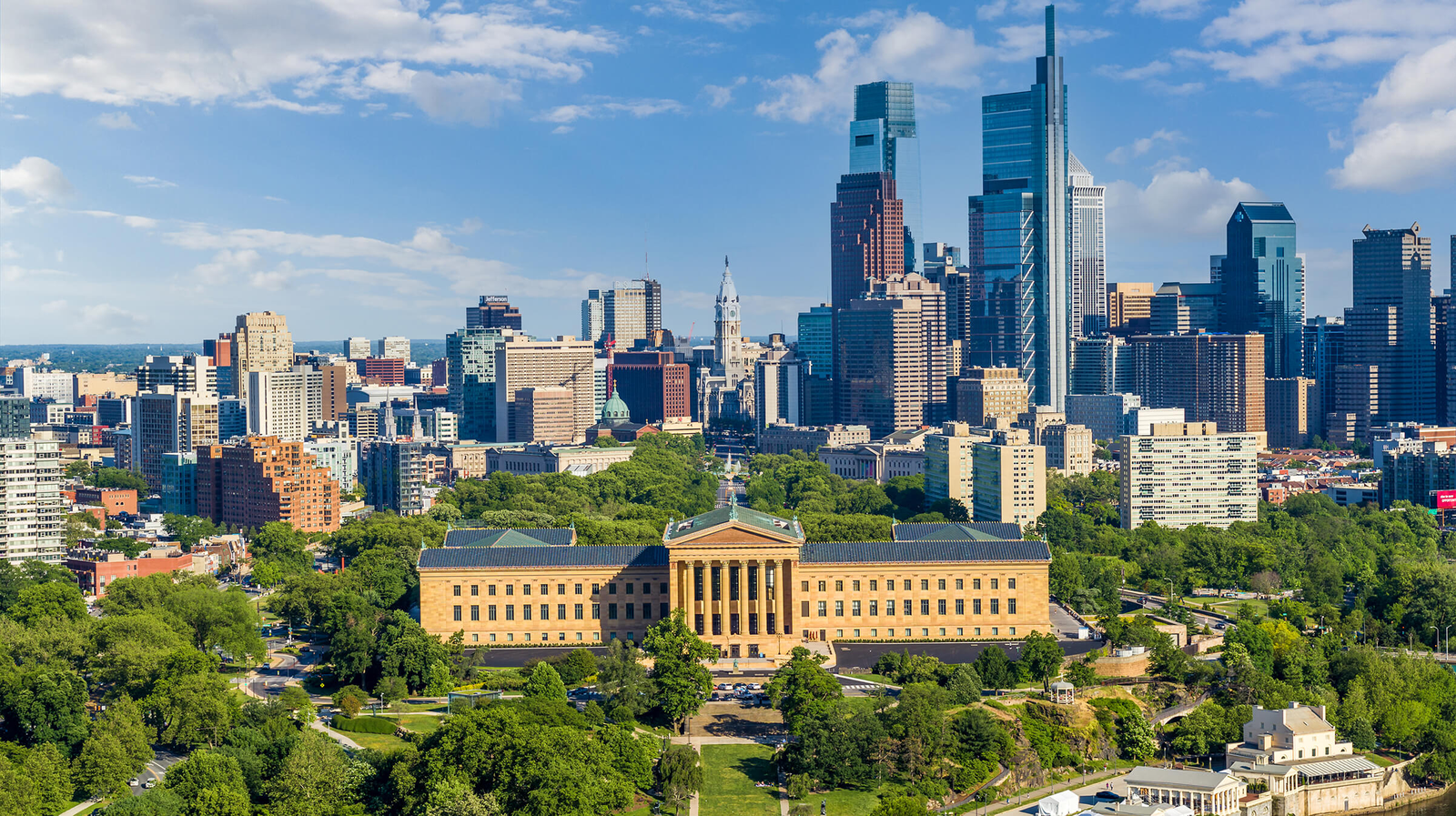Between cobblestone streets and skyscrapers, Philadelphia’s Fairmount Park system weaves over 9,200 acres of urban wilderness and carefully cultivated gardens for locals and visitors to enjoy green space.
| Park Name | Key Features |
|---|---|
| Rittenhouse Square | Downtown oasis with historic charm, offering benches, pathways, and vibrant city life. |
| Wissahickon Valley Park | Wilderness adventure with 57 miles of trails, historic sites, and diverse natural beauty. |
| Clark Park | Community hub with events, a sprayground, and outdoor activities in West Philadelphia. |
| Schuylkill River Trail | Recreational path along the river, ideal for biking and walking with scenic views. |
| Penn Treaty Park | Historic site commemorating peace with native tribes, offering riverfront views. |
| Belmont Plateau | Panoramic city views, trails, and nature education in West Fairmount Park. |
| FDR Park | Diverse recreational activities with sports facilities and green spaces in South Philadelphia. |
| Lovett Park | Small community park in Mt. Airy with gardens, benches, and a treehouse-style structure. |
| Paine’s Park | Public skateboarding park along the Schuylkill River with urban design elements. |
| Pennypack Park | Expansive green space in Northeast Philadelphia with trails, wildlife, and historical features. |
| Spruce Street Harbor Park | Seasonal urban beach vibe with hammocks, games, and waterfront activities. |
| Washington Square | Historic square with green space, food carts, and a statue of George Washington. |
When city life feels hectic, these 12 top parks promise fresh air and natural peace across Philly’s diverse neighborhoods.
Rittenhouse Square
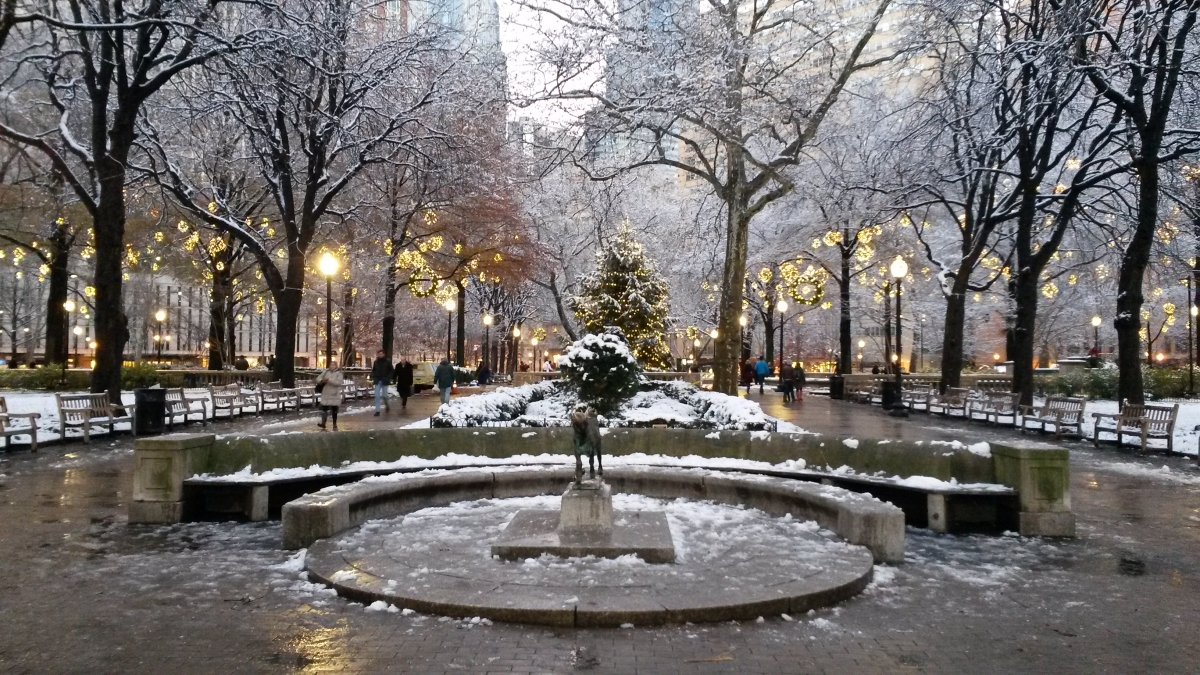
Name and Location: Rittenhouse Square is a historic urban park in the Rittenhouse neighborhood of downtown Philadelphia.
History and Significance: Established in 1825, it is one of the five original open-space parks planned by William Penn. Today the Square and surrounding neighborhood have a reputation for upscale offerings.
What to Expect: Visitors will find tree-lined pathways, lush lawns for lounging, a central fountain, sculpture and people watching opportunities of residents, workers and tourists in this lively urban space.
Visitor Information: Rittenhouse Square is open daily with no admission fee. Several cafes and restaurants border the Square.
Dating back to 1682 when Philly founder William Penn first plotted verdant squares, Rittenhouse Square remains a cherished downtown oasis. Stroll along the central pathway passing fragrant roses and massive beech trees while kids laugh chasing ducks in the pond. Relax on benches and observe chess players focused intensely, catch up with friends at the café, hear excellent buskers, and spot brides posing by famed lion statues for romantic wedding photos. The vibrant Rittenhouse Square thrives with city life.
Wissahickon Valley Park
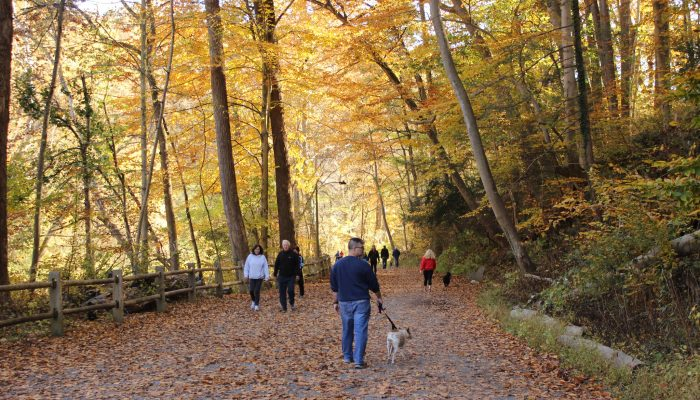
Name and Location: Wissahickon Valley Park is a large park located alongside Wissahickon Creek in northwest Philadelphia.
History and Significance: Deemed historically significant for its role in the Battle of Germantown, today the park is beloved for its rugged wooded terrain, dramatic shale cliffs, and 57 miles of trails.
What to Expect: Visitors enjoy scenic vistas, over 200 bird species, an arboretum, hiking, biking, horseback riding trails, fishing and the geometrically stunning Covered Bridge over Wissahickon Creek.
Visitor Information: The park is open daily from dawn to dusk. No admission fees or permits. Some activities require permits issued through the Friends of the Wissahickon volunteer group.
Adventurers hike, bike and ride horses along the Wissahickon Valley Park’s 57 miles of trails following the creek’s rushing waters carving dramatic rock formations through Fairmount Park. Gaze at the quaint Valley Green Inn, a country pub built in 1850 now nestled beneath towering cliffs once used by Lenape tribespeople. Spot herons fishing the Wissahickon and pass ruins from America’s first waterworks dam built in 1822. Pack a lunch while experiencing the wonders of wilderness right in Philly’s backyard along Forbidden Drive.
Clark Park
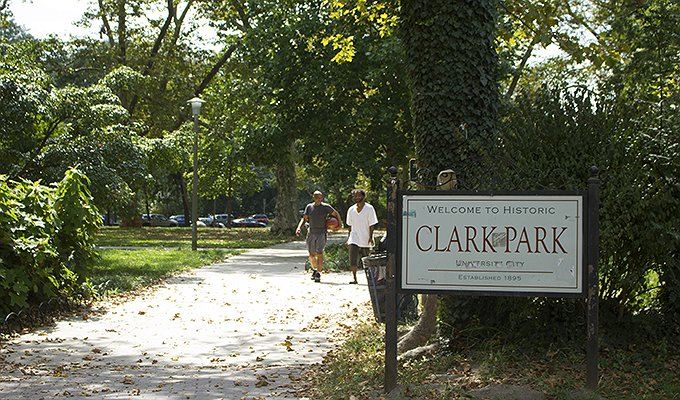
Name and Location: Clark Park is a municipal park in the University City neighborhood of West Philadelphia.
History and Significance: Founded in 1895, it was the first recreation commission park constructed in Philadelphia. It hosts an active community center today alongside green space.
What to Expect: Visitors will find open grassy areas, walking paths, tennis and basketball courts, playgrounds, community garden plots, public art, and an active community center with various indoor amenities and programming.
Visitor Information: Clark Park is free and open daily from 8am to dusk. Some facilities may have additional open hours based on programming and staff availability.
Clark Park may only cover 9 acres in the middle of West Philadelphia’s dynamic community, but it buzzes as a hub hosting farmers markets, cultural festivals, summer camps, movie nights and much more. Kids flock to the sprayground on hot days while adults play handball or join tai chi classes at the recreation center. Converted from an empty lot once plagued by crime, Clark Park now shines thanks to passionate neighborhood volunteers planting trees, painting murals and programming inclusive events that bring positive change.
Schuylkill River Trail

Name and Location: The Schuylkill River Trail spans nearly 60 miles primarily along the Schuylkill River’s east bank. It runs from Pottsville to Philadelphia.
History and Significance: Completed in sections starting in the 1950s, it is one of the oldest rail trails in the country, providing recreation and alternative transportation through scenic landscapes.
What to Expect: Trail users can walk, run, bike or skate along sections featuring river views, island picnic areas, historic sites, wildlife habitats and cultural attractions lining the route.
Visitor Information: The trail is open daily with multiple access points. Some sections allow horses. No fee is required and pets are permitted on leashes. Mile markers and maps aid navigation.
Pedal, power walk, push strollers or meander slowly along the Schuylkill River Trail as it winds nearly 25 miles from Center City, past the Philadelphia Zoo, through scenic bridges and wooded pockets rich with wildlife. Perfect for cycling adventures, this well-kept recreational path mostly parallels the Schuylkill River’s edge providing views of regal Boathouse Row homes and even the “Rocky Steps” with the Philadelphia Museum of Art overhead. Stop along the way to kayak, picnic, birdwatch, or photograph romantically rustic graffiti-covered railroad viaduct ruins.
Penn Treaty Park
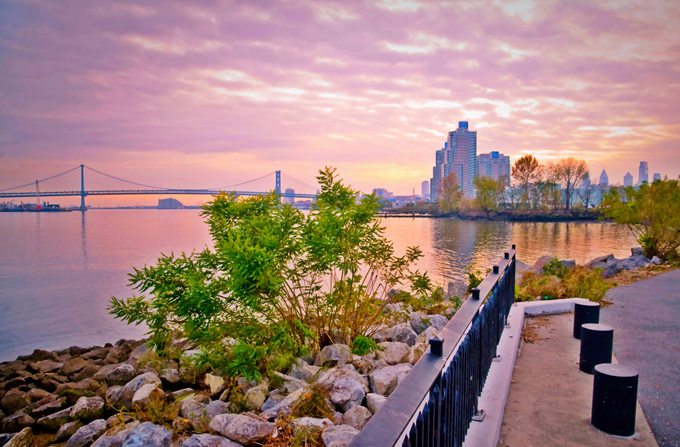
Name and Location: Penn Treaty Park sits along the Delaware River bank in the Fishtown neighborhood of Philadelphia, near the site where William Penn supposedly signed a peace treaty.
History and Significance: Designated a city park in 1893 to commemorate the legendary site, an ironwork arch was erected where Penn negotiated for land with the Lenni Lenape tribe in 1682.
What to Expect: Visitors will find open green space with river views, an iconic landmark arch, walking paths, monuments, historical/educational signage and a large recreational dock permitting river access for fishing and small craft launching.
Visitor Information: Penn Treaty Park is open daily from 6am to midnight. No admission fees. On-street parking available. Periodically hosts events.
Standing along the Delaware River where William Penn famously signed his treaty of friendship with Lenape tribes in 1682, Penn Treaty Park today honors that promise of peace and welcome with open lawns, willow trees and scenic benches. Philadelphia’s Founder greets modern crowds in statue form pointing over the waterfront as planes descend low across gray skies onto nearby Philly International Airport. Locals fish from the pier watching rowers pull oars in unison along the glimmering river framed beautifully by the Ben Franklin Bridge arches towering above.
Belmont Plateau
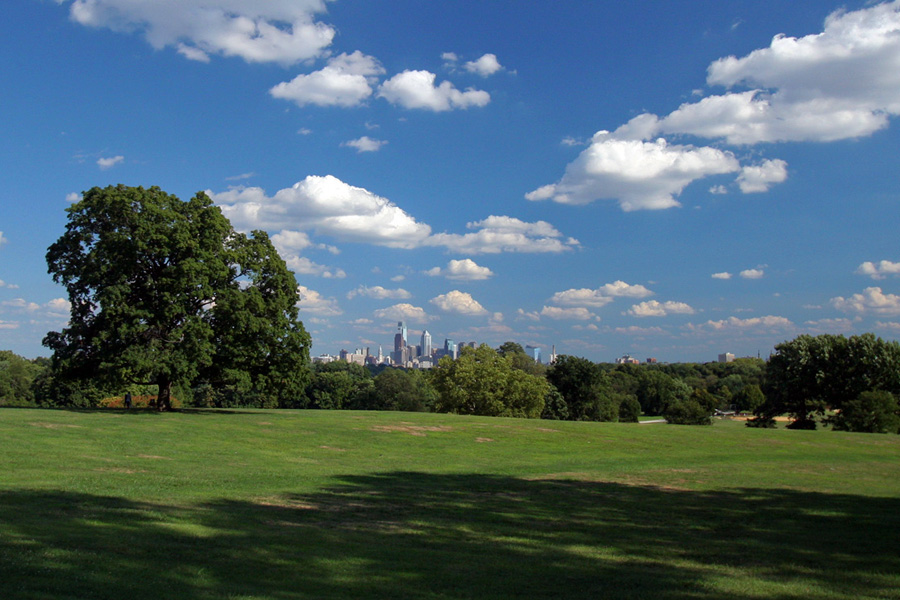
Name and Location: Belmont Plateau is the largest section of West Fairmount Park overlooking the Schuylkill River. It offers skyline views of Philadelphia.
History and Significance: Developed for reservoir usage, its pastoral landscape inspired 19th century painters and now its heights provide panoramic vistas of the historic city, making it a recreational destination.
What to Expect: Visitors ascend wooded trails leading to the Plateau’s grassy knolls opening up spectacular views from multiple overlooks. The scenic terrain offers hiking, biking and cross country trails.
Visitor Information: Daily access sunrise to sunset. Admission is free. Parking fees apply March-December. Portable restroom facilities onsite.
High atop the city’s highest point in West Fairmount Park, Belmont Plateau treats visitors to panoramic skyline views from its central location along the winding Schuylkill River. Hiking and mountain bike trails weave over the rugged 172-acre plateau once used as a lookout by British and Continental troops during the Revolutionary War. Today Belmont Plateau sees community festivals, cross-country meets among wooded trails, disc golf among the boulders, and Nature Center education about local wildlife who all call the high plateau home because of its peaceful isolation from city streets below.
FDR Park
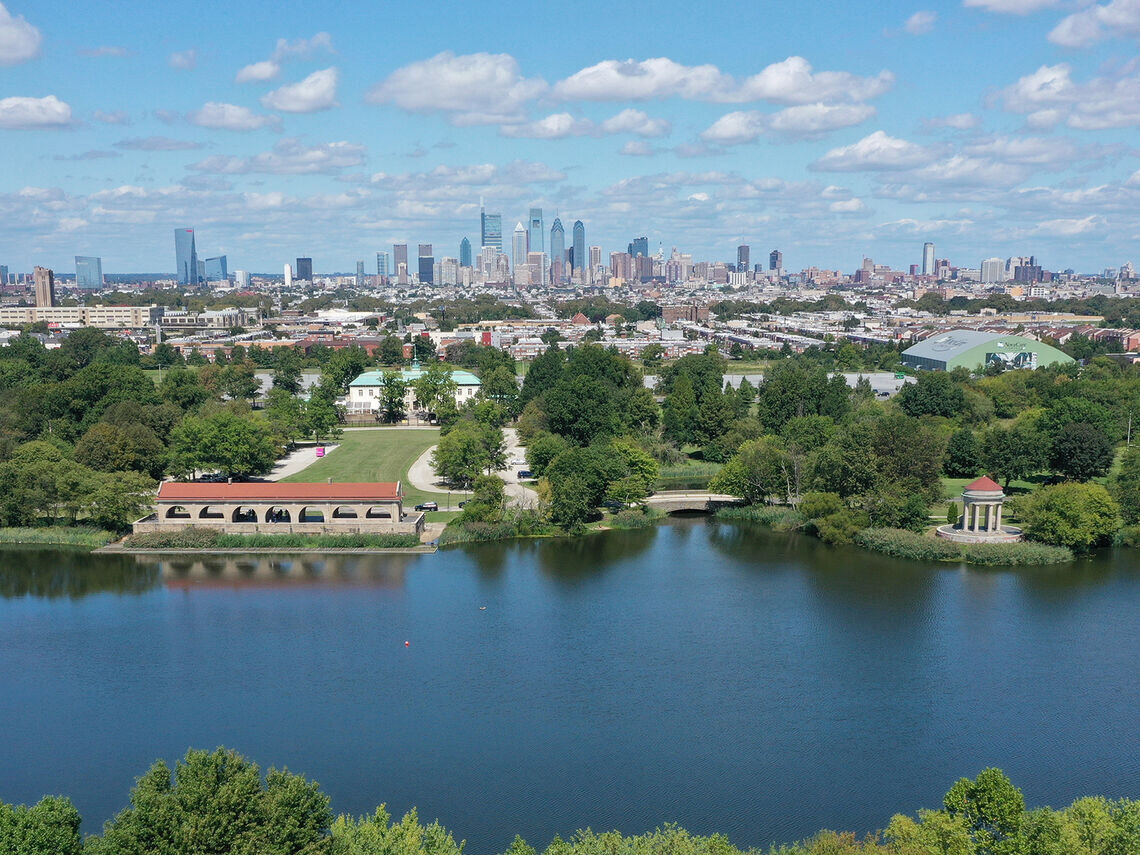
Name and Location: FDR Park is a large municipal park located in South Philadelphia near the stadium district.
History and Significance: Originally a landfill created by Depression era work programs, FDR park was dedicated in honor of President Franklin D. Roosevelt in 1967 with planned recreational facilities.
What to Expect: Visitors enjoy 400 acres with a variety of active and passive uses including lakes, playing fields, golf, tennis, picnic sites, playgrounds, trails and cultural/historic attractions.
Visitor Information: Open daily with free admission. Some sites like the golf course require fees. Parking fees apply on event days at nearby stadiums.
Packed with ball fields, golf courses, tennis courts, playgrounds, a fitness trail with exercise equipment stations and over 2 miles of linear green space, FDR Park provides an incredible recreational outlet along South Philadelphia’s commercial corridor. Its 348 acres honor President Franklin Delano Roosevelt through civic use that promotes health and play for Philly families of all backgrounds. Leash-free dog parks give pups room to run as owners bond, while consistent programming like craft fairs and movie nights means FDR Park always buzzes.
Lovett Park

Name and Location: Lovett Park is a neighborhood park located in the Manayunk section of Philadelphia, PA along the Schuylkill Canal towpath.
History and Significance: A formerly industrial site, the park and Ivy Ridge Trail restored access to the river and canal after Expressway construction during redevelopment honoring the canal’s history.
What to Expect: The linear park features playgrounds, athletic courts, grassy fields, river overlooks, educational signage and a recreation path linking Manayunk’s restaurant and shopping district to the canal and trails.
Visitor Information: Lovett Park is open daily without admission fees. Some amenities like courts require permits. Parking garages operate nearby.
Tucked within Philadelphia’s quaint and artsy Mt. Airy neighborhood, Lovett Park makes perfect use of its petite plot by offering lawns, benches and fountains for neighbors enjoying takeout from local restaurants or just relaxing. Leashed dogs sniff their furry friends as owners catch up on a pretty day. Residents maintain garden beds adding vibrant colors to an often gray city while kids test their bravery climbing the treehouse-style structure. Despite its small stature, Lovett Park’s community spirit looms large.
Paine’s Park
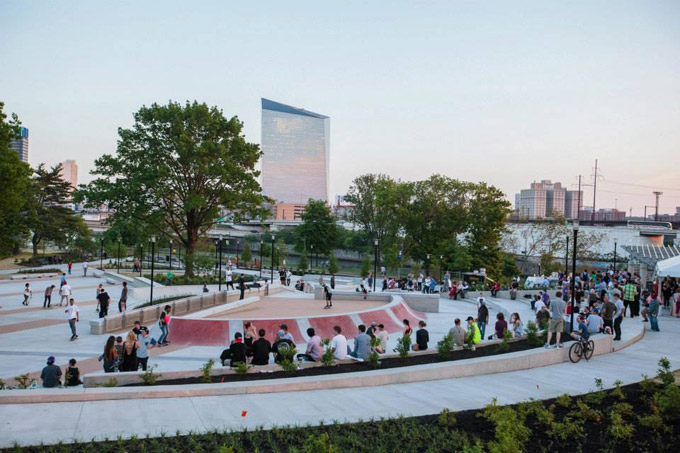
Name and Location: Paine’s Park is an urban skatepark along the Schuylkill River banks, minutes from downtown Philadelphia.
History and Significance: Opened in 2013 after 10 years of planning and fundraising efforts, the park honors local skateboarding pioneer Franklin Williams. Its concrete terrain was designed by skaters to emulate street skating conditions.
What to Expect: Skaters, bikers and spectators converge on the park. The site features unique concrete sculpted banks, stairs, rails, ledges, embankments and transition pools resembling an urban landscape ideal for performing tricks.
Visitor Information: Free daily access without staff. Visitors must bring their own non-motorized skating equipment. The park is unsupervised and skaters assume risk. Helmets recommended.
Under concrete ramps along the Schuykill River banks, skaters gain momentum to launch high from concrete ledges and rails at Paine’s Park while BMX riders practice aerial spins through the nation’s first public skateboarding park. Watch in awe as daring athletes flip boards or bikes over the iconic fountain flowing down steps to the rhythm of upbeat soundtracks. Nestled across from the Philadelphia Museum of Art with the city skyline framing picturesque views beyond, Paine’s Park challenges personal limits as crowds cheer.
Pennypack Park
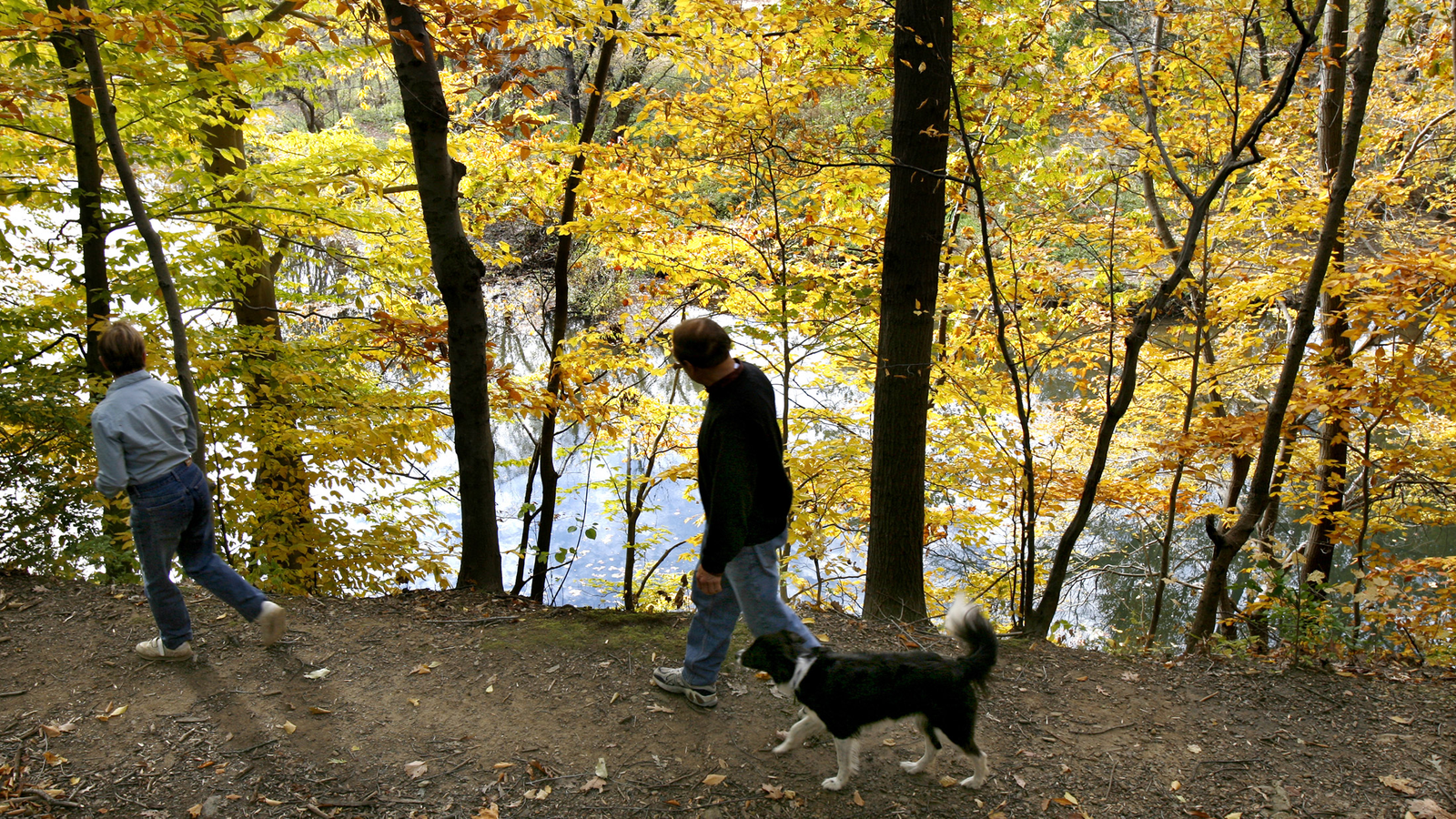
Name and Location: Spanning over 1,600 acres, Pennypack Park represents one of the largest municipal parks in Philadelphia, following Pennypack Creek through Northeast Philadelphia.
History and Significance: Acquired by the city in 1905 to protect water resources, today Pennypack Park provides education, recreation and refuge for local wildlife and vegetation across a variety of well maintained habitats and facilities.
What to Expect: Hiking, biking, fishing, boating, picnicking, nature study, athletic fields/courts, playgrounds, a maintained wildlife trail, physically accessible amenities and seasonal cultural events.
Visitor Information: The park operates daily without entrance fees. Some areas like athletic facilities require permits and scheduled maintenance occurs.
Trails under a thick forest canopy draw outdoor enthusiasts seeking wilderness adventure to Pennypack Park situated in Northeast Philadelphia spanning 1,600 acres. Hikers wander through the pine barrens and deciduous woodlands spotting white-tailed deer and red fox plus seasonal migratory birds. Anglers often cast lines trying to snag crappie, largemouth bass and catfish lurking in creeks feeding into the central Pennypack Creek winding through hedgerows and stone bridges reminiscent of the English countryside.
Spruce Street Harbor Park
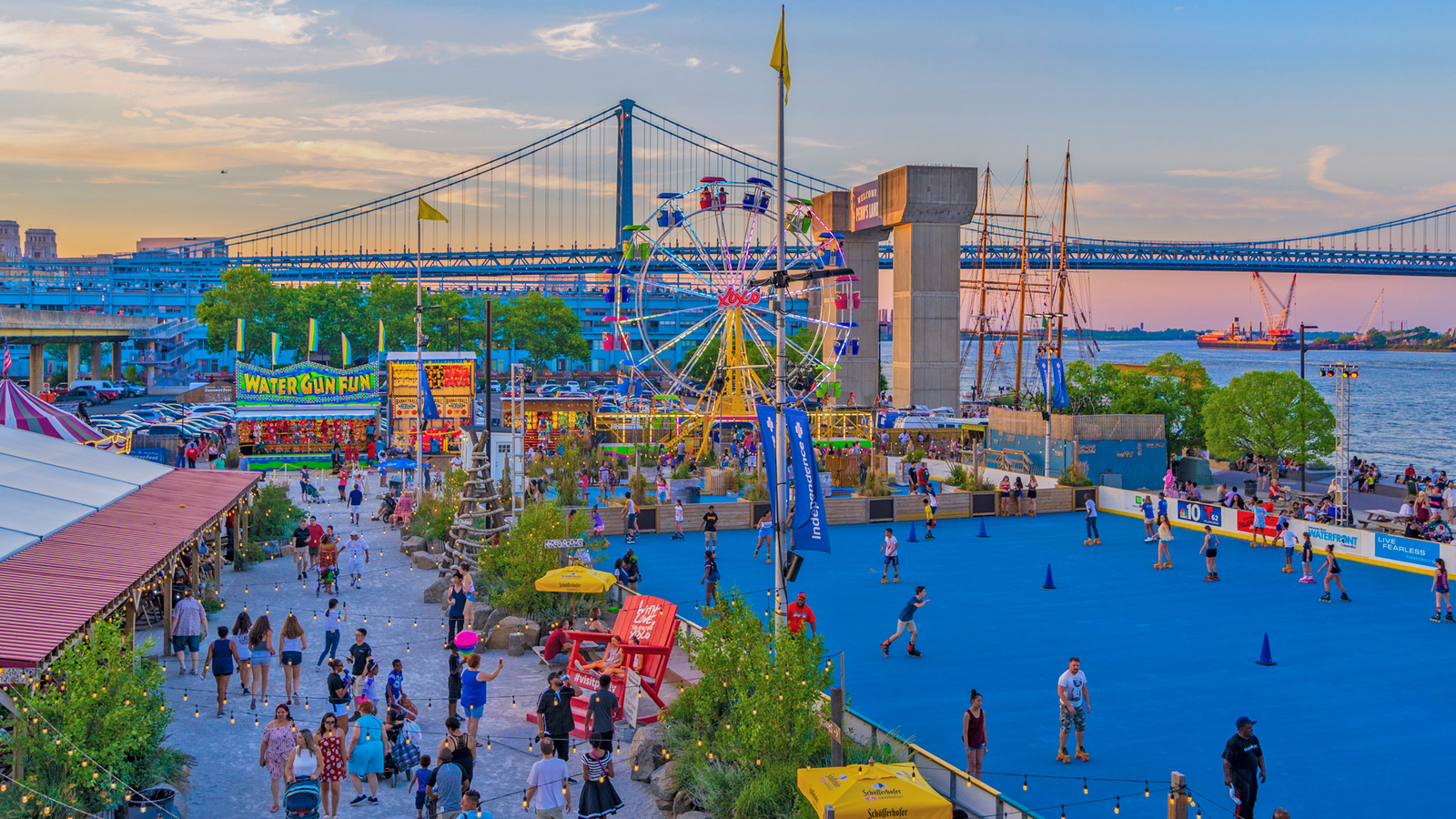
Name and Location: Spruce Street Harbor Park is a seasonal pop-up park located along the Delaware Riverfront in downtown Philadelphia.
History and Significance: Launched in 2014 to transform unused summertime pier space into a waterfront oasis, its success led to making the installation an annual tradition celebrating the city’s maritime history.
What to Expect: Visitors can enjoy the scenic river backdrop while relaxing in modern lounge chairs and hammocks, playing yard games, listening to music performances and enjoying food/drinks at the onsite beer garden and restaurants.
Visitor Information: Free admission to grounds from early April through late September. Food/drinks, special events and rentals incur additional costs at the popular seasonal spot.
As soon as weather warms along the Delaware Riverfront, Spruce Street Harbor Park opens for the season creating a fun urban beach hangout vibe. Visitors relax in colorful hammocks strung under twinkling lights, play lively games like giant Jenga blocks and Connect Four, munch on food truck goodies, visit floating bar barges, enjoy pop-up yoga, dance to live bands, and take harbor tours on the AJ Meerwald historic oyster schooner. Free to enter, Spruce Street Harbor Park delights crowds with room for 2,500 guests nightly.
Washington Square
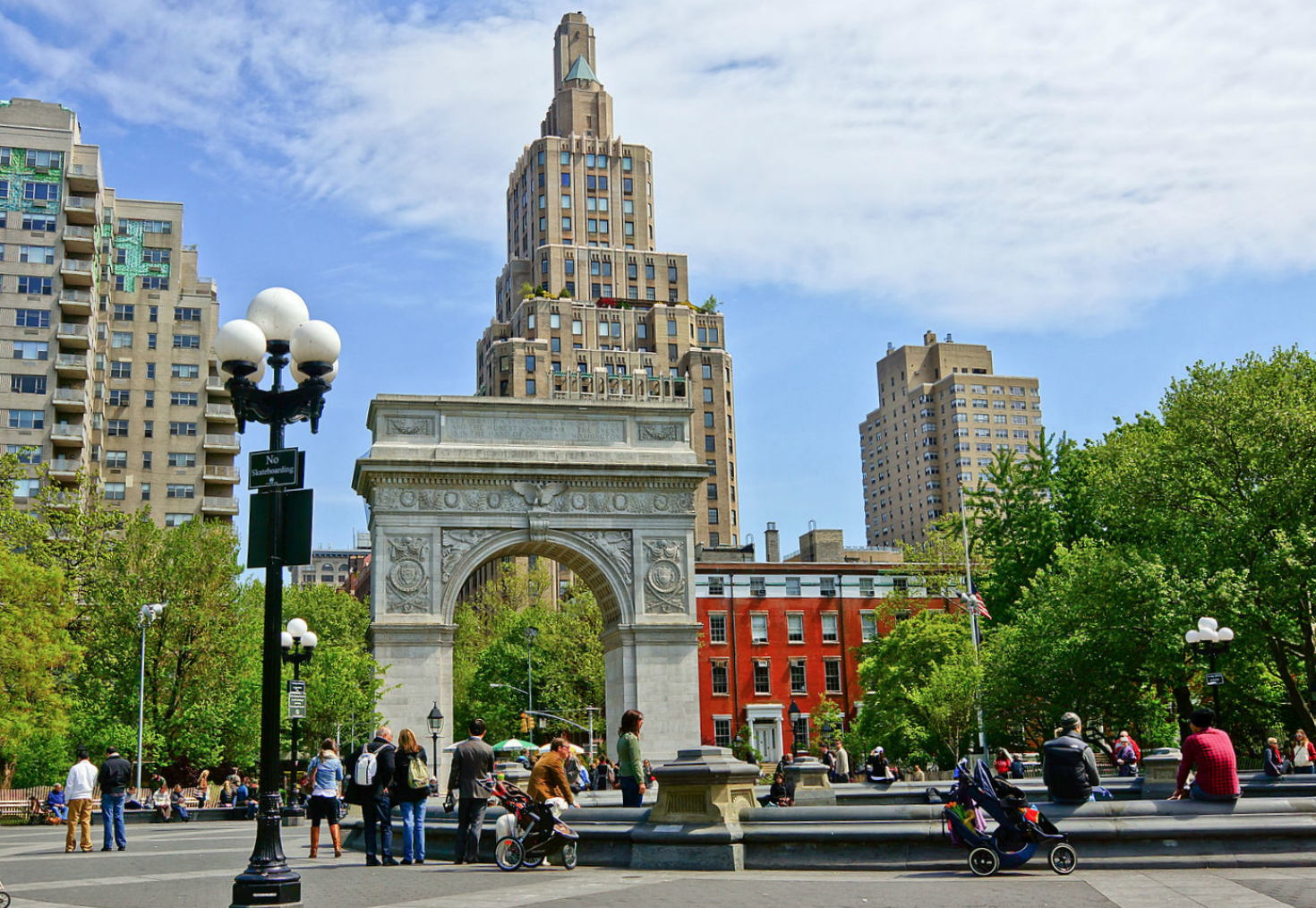
Name and Location: Washington Square is a historic urban park in the heart of Philadelphia’s Old City neighborhood surrounded by historic landmarks and cultural attractions.
History and Significance: Originally called Southeast Square, this was one of William Penn’s original five city parks plotted in 1682. Later renamed after President George Washington, it serves as an iconic public space.
What to Expect: Stately shade trees surround fountains and wooden benches frequented by visitors and office workers seeking respite amidst historic sites, memorials and a Tomb of the Unknown Revolutionary War Soldier.
Visitor Information: Washington Square operates daily without admission fees as a welcoming spot for relaxation or eating takeout from the many eateries bordering the Square.
Originally designated as Southeast Square by city founder William Penn when he mapped a public park for each of Philadelphia’s four corners in his 1682 grid, Washington Square now commemorates the nation’s first president with an enormous statue in his honor at its center. Professionals grab lunch from popular food carts on busy weekdays while residents play fetch with happy dogs, read on shady benches, or meet to play chess at tables. Washington Square may seem ordinary today but remains a stunning early example of urban planning that conceived city parks as crucial community hubs.
From sprawling Fairmount Park’s lush riverfront trails to quaint neighborhood gardens inviting sociability, Philadelphia’s beloved parks enhance wellbeing. Locals find refuge in the roaring Wissahickon cliffs and relax downtown watching Rittenhouse Square ducks play. FDR Park and Schuylkill River paths encourage staying active while Paine’s Skatepark challenges personal limits. These 12 parks reveal Philly nature’s beauty, foster togetherness, and restore balance to busy city life.

